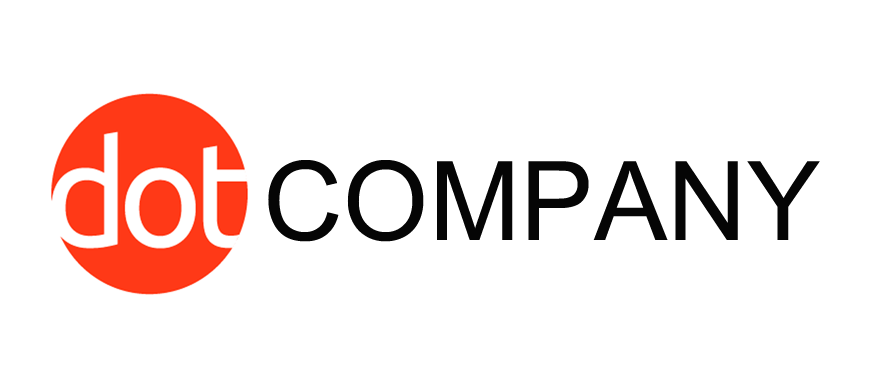Considering expanding a new segment within your business and puzzled about integrating it into your existing website? You’re not alone. This challenge is as common as the concept of websites themselves. Fortunately, there are solutions available, albeit accompanied by a series of considerations and varying pieces of advice depending on who you consult.
No need for alarm; we’re here to clarify your options, explain their mechanisms, and discuss their potential effects on your SEO performance. Continue reading for a clearer understanding of the path that best aligns with your needs and your website’s.
When it comes to integrating this new business segment, you primarily have two options:
- Create a subdomain within your existing website to house the new segment.
- Register a new domain name and launch a separate website specifically for this new facet of your business.
Navigating the decision to expand your online presence through a subdomain or a new domain can be complex. Your primary domain acts as your digital storefront, represented by the homepage URL minus the ubiquitous “https://www.” For instance, “yourbusiness.com” is your main domain, and every additional page (e.g., “yourbusiness.com/shop”) builds upon it through subdirectories. Opting for a new domain involves acquiring a completely new URL, thereby establishing an entirely separate digital address, such as “anotherbusiness.com.”
In contrast, a subdomain functions as an extension of your main domain. Using the previous example, “shop.yourbusiness.com” illustrates how a subdomain for your site’s shop section would appear. Unlike acquiring a new domain, creating a subdomain on your existing site doesn’t incur extra costs. However, financial considerations are just one part of the equation.
When weighing the options between a new domain and a subdomain, several factors come into play:
- The potential impact on your main site
- Possible SEO benefits
- Tracking and analysis through tools like Google Analytics
- The contextual relevance of the new content
Both choices come with their advantages and disadvantages. Here’s a closer look at the dynamics of opting for a subdomain.
The Pros and Cons of Subdomains
Subdomains excel in structuring and segregating sections of your site, such as FAQs or About pages, which aggregate specific information related to your business. For a substantial repository of resources like whitepapers and eBooks, a subdomain provides an organized space, preventing clutter on your main site’s architecture. This organization is crucial since search engines favor well-structured websites, and disorganization can lead to penalties affecting your site’s relevance score.
Subdomains serve various purposes, including:
- Hosting distinct landing pages for recurring campaigns
- Establishing a co-branded online space for partnerships (e.g., “theircompany.yourcompany.com”)
- Geographic or international market segmentation (e.g., “themoon.yourcompany.com” for interstellar market expansion)
- Supplementing your main offerings with an ecommerce platform (e.g., “store.yourcompany.com”)
- Offering multiple language versions of your site (e.g., “dansk.yourcompany.com”)
- Segmenting specific customer needs, like support or events (e.g., “christmasbbq.yourcompany.com”)
Domain Authority and Subdomains
The relationship between subdomains and the main website’s domain authority is complex. While search engines like Google claim no preference, treating subdomains similarly to separate websites, they require individual verification in Google Search Console. If a subdomain’s content significantly influences your main site’s SEO, it might be more advantageous to use subdirectories. This approach keeps content on the main site, enhancing logical structure without fragmenting SEO efforts.
Subdomains necessitate a unique SEO strategy focused on specific keywords to boost relevance. They must be integrated with the primary domain’s SEO strategy to avoid content duplication issues, which can harm search performance. Initially, the primary domain’s search authority can positively affect the subdomain, aiding in establishing its online presence.
Furthermore, performance analysis tools like Google Analytics and Google Search Console do not automatically consolidate metrics for a root domain and its subdomains. This separation is beneficial for content that serves a distinct purpose from the main site, requiring unique analytics and SEO strategies focused on specific subject matter.
Opting for a new domain carries the undeniable reality of additional costs; it necessitates purchasing a unique URL, setting up a completely separate website, and navigating the financial investment required. Despite the expense, there are compelling reasons why businesses might choose this route over creating subdomains on their existing site. Let’s explore the advantages and potential drawbacks of embracing a new domain for expanding your business ventures.
Advantages of a New Domain
Tailored Business Expansion
Consider the scenario of a restaurant owner whose ice cream becomes wildly popular. To capitalize on this success without disrupting the main restaurant’s operations, the owner might open a separate ice cream shop. Similarly, a new domain allows businesses to expand specific aspects of their operations into distinct, standalone entities. This separation ensures that each venture can operate independently, with its customer base, branding, and financials, safeguarding the primary business from potential negative impacts of the new venture.
Dedicated Online Presence
Creating a new domain for a business expansion means you can craft a dedicated website from the ground up, specifically tailored to the new product or service. This approach allows for a focused SEO strategy and custom technical settings, such as a specific robots.txt file, ensuring optimal indexing and crawling by search engines. A dedicated site also enables the implementation of bespoke functionalities, like e-commerce platforms or booking systems, without constraints.
Custom Domain Opportunities
The availability of various top-level domains (TLDs) offers businesses the chance to secure more relevant or creative URLs. For example, a business could choose a custom TLD that aligns closely with its brand or the particular service it’s expanding, such as “.store” for a retail venture. This strategy can enhance brand recognition and provide a clear delineation between different facets of a business.
Drawbacks of a New Domain
Increased Initial Investment
Launching a new domain involves not just the cost of the domain itself but also the development and maintenance of a completely new website. This includes design, content creation, and the integration of any specific functionalities required for the new business venture.
Separate SEO Strategy Required
A new domain starts with no existing search authority, necessitating the development and implementation of an entirely new SEO strategy. This process can be time-consuming and requires significant effort to build domain authority from scratch.
Brand Continuity Challenges
Managing multiple domains can complicate efforts to maintain brand continuity and coherence across different business ventures. Each website may cater to different target audiences or offer distinct services, requiring careful brand management to ensure consistency.
Choosing between a new domain and a subdomain depends on your business objectives, resources, and the degree of separation you wish to maintain between different ventures. A new domain offers the advantage of a tailored, independent online presence but comes with higher upfront costs and the challenge of building a new site’s SEO and brand identity. Conversely, subdomains allow for closer integration with your existing web presence but may not provide the same level of distinctiveness or flexibility as a completely new domain. Ultimately, the decision should align with your long-term business strategy and how you envision your brand evolving.
If you’re weighing options beyond new domains or subdomains, there’s another avenue worth exploring: subdirectories, also known as subfolders. These are essentially extensions to your website’s URL that help organize content into specific areas, like the “products” in yourbusiness.com/products. By adding subfolders, you can create a multi-layered structure, such as yourbusiness.com/products/novelty-mugs, enhancing site navigation and providing a clear hierarchy for search engines to index.
However, challenges arise when you need to integrate a new segment into your site that doesn’t naturally align with existing content. Forcing it into an unrelated section or padding out the site with irrelevant content can harm your SEO, as search engines may struggle to understand and properly index your site.
Opting for subdirectories is generally simpler but assess their fit carefully. Depending on your needs, a subdomain or even multiple domains might serve you better in the long run, despite the extra effort required.
Making the Right Choice
Deciding on the best structure for your online presence is akin to choosing the right tool for a job—it all depends on the task at hand. There’s no one-size-fits-all answer; it varies based on your specific circumstances.
Subdomains are typically advantageous for expanding on a topic related to your main site’s content but too broad or complex for a subdirectory. This setup can benefit SEO, as both the main domain and subdomain can lend contextual support to each other.
Conversely, a new domain may be the preferred route for launching a completely new business, product, or service that diverges from your main site’s focus. Independent management of this new entity often yields better search engine performance, as it can be tailored specifically to the new venture’s goals without diluting your original brand’s message.
We hope this guide has illuminated the pathways available for your website’s expansion. If uncertainty still lingers, our team of experts is on hand to offer tailored advice, helping navigate the complexities of domain strategy.
For those leaning towards a new domain, our domain search tool is ready to assist in exploring available options, paving the way for your next digital venture.
Get Started with Joomla Hosting Today
Joomla can be installed instantly and for free using our 1-Click script installer:











